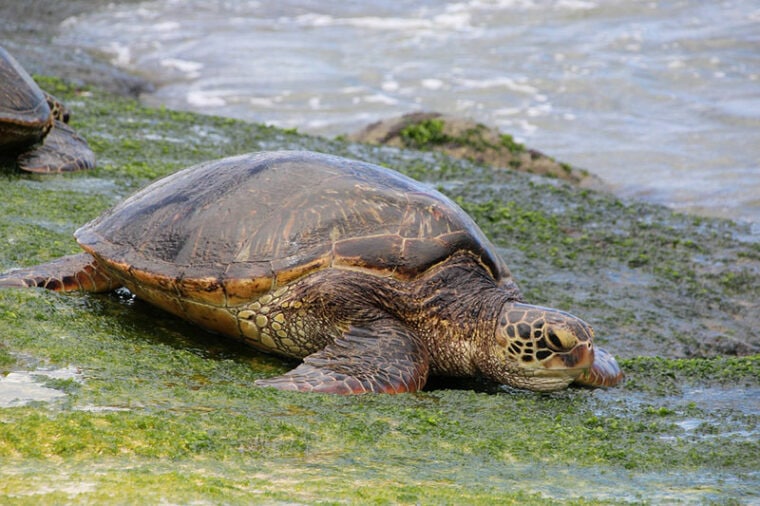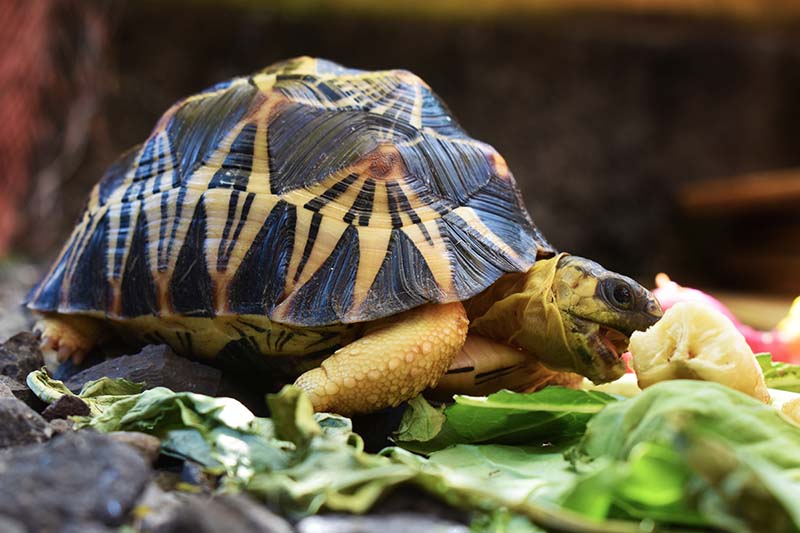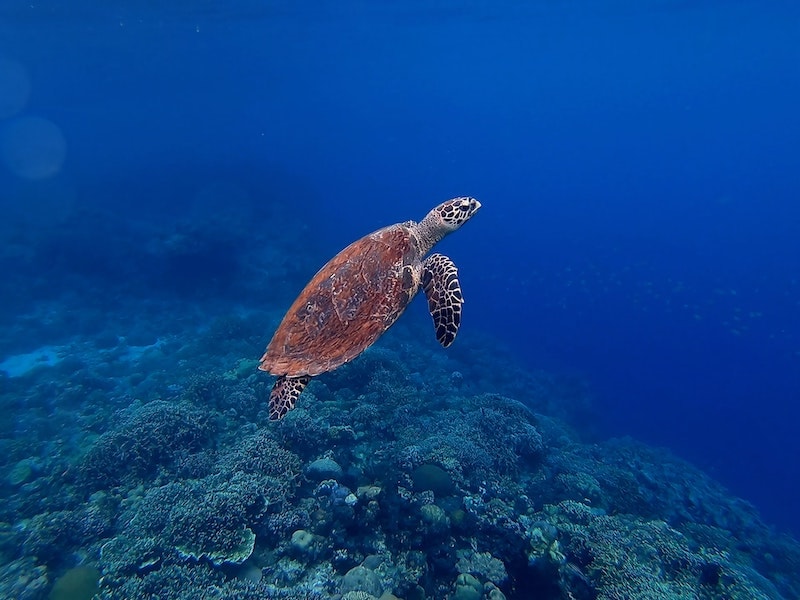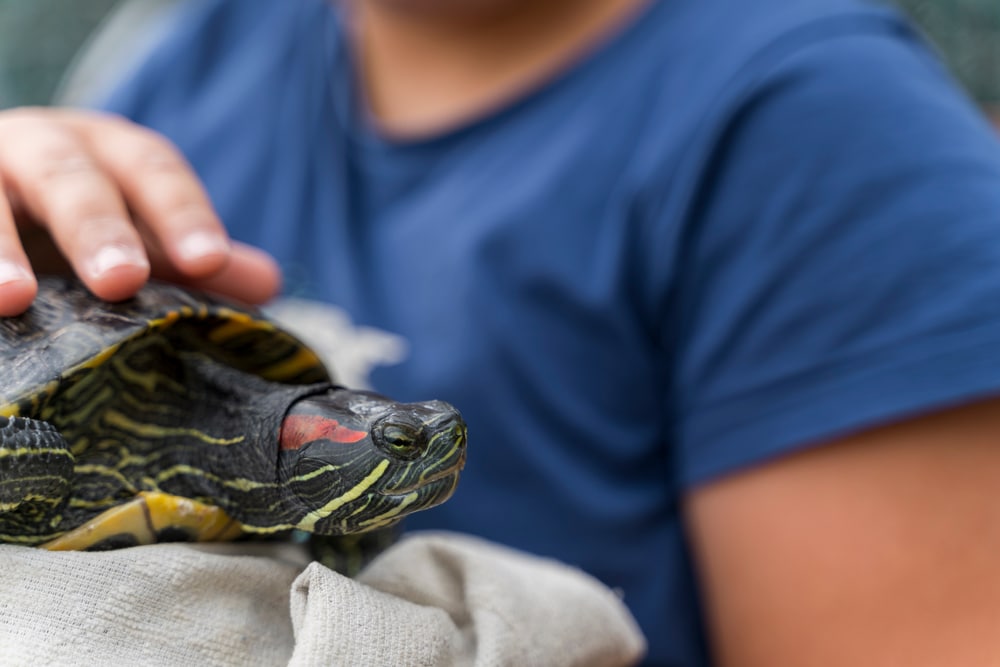
Click to Skip Ahead
Turtles can be just as difficult to look after as pets like cats and dogs, and you’ll need to know about their habitat needs before caring for one. Some turtles live both in and out of water, while others, like tortoises, live solely on land and can’t swim.
Knowing the difference between aquatic and terrestrial turtles is necessary before you bring one of these reptiles home. You need to make their habitat suitable for their species to ensure their safety.
Do Turtles Live in Water?
When you think of turtles, you probably think of sea turtles or the aquarium pets. Not all turtles live in the water, though. Terrestrial turtles—or tortoises, as they’re more commonly known—barely have anything to do with water at all. They need fresh drinking water and a bath now and then, but they spend all their time on dry land.
For other aquatic turtles, their desire to be in and around water depends on their species. The ones that are commonly kept as pets and sea turtles have adapted to live in water. However, aquatic turtles will spend more time on land than sea turtles.
The term “turtle” is confusing because it can refer to many different species of animals and is sometimes solely interpreted as “sea turtle.” When discussing these animals, the term “chelonian” is preferred for taxonomical clarity. There are three main categories of chelonians:

What Are the Differences Between Terrapins and Tortoises?
Terrapins and tortoises are part of the same taxonomic order (Testudines), which means they are all technically turtles. That said, there are a few important differences. Species under the “turtle” banner are differentiated by name, what they eat, their appearance, and even how long they spend in the water.
Terrapins

While sea turtles are ocean dwellers and tortoises are land animals, terrapins, or aquatic turtles, enjoy the best of both worlds and divide their time between water and land. You’ll need to tailor your turtle’s habitat to their needs by providing deep water for them to swim in and plenty of space for a basking area.
You need to know which turtle species you have, though. Some turtles, like the box turtle, are similar to tortoises and prefer to spend more of their time on land.
Diet
A turtle’s diet can vary depending on their species. That said, they have a more varied diet than tortoises. Being omnivores, they will eat a mix of vegetables, mealworms, and fish. Certain turtle species will only eat animals and might even prefer live food rather than freeze-dried meals. How often they eat and their diet depend on their species and age. Some terrapins are carnivorous.

Feet
A turtle’s feet are perfect for aquatic and terrestrial activities. Their feet combine a tortoise’s sturdy stumps and a sea turtle’s flippers. Most of them have webbed toes that enable them to propel themselves through water easily and give them plenty of traction on land, both for walking and digging.
Shell
While a turtle’s feet might be a mix of a tortoise and a sea turtle, their shell leans more toward the sea turtle in style and appearance. It’s flat and well suited to cutting through water, especially compared to the heavy dome of a tortoise. Unlike a sea turtle, however, a turtle can retract into their shell if they feel threatened.
Terrestrial Turtles (Tortoises)

Terrestrial turtles are more commonly known as tortoises. These reptiles are popular pets, but they don’t swim like their aquatic cousins. While they’re the only turtle species that can’t swim, they sometimes do need shallow enough water to bathe in. You also need to make sure your tortoise still has plenty of room in their terrarium for them to roam around. Of the three types of turtles, tortoises are the longest lived.
Diet
Aquatic turtles might have a more varied diet depending on their species, but tortoises are more particular about what they eat. Most will only eat fruits, berries, and vegetables. However, some species (typically those found in tropical forests or rainforests) are omnivores. Desert tortoises are herbivores.
Your tortoise will get some of their water intake from the plants that they eat, but always make sure fresh water is available for them to drink.

Feet
As land-dwelling animals, tortoises aren’t made for swimming. Their feet are similar to those of an elephant and are short, stump-like, and flat. Tortoises also have strong nails to aid in digging. While their feet are sturdy and reliable on land, they don’t do so well in water and can’t swim.
Shell
Of the three types of turtles, the tortoise has the highest profile. While the pancake tortoise does have a flat shell shape, most terrestrial turtles have high, domed shells. This gives them plenty of space to pull their head and legs into their shell if they feel threatened for any reason, protecting themselves from predators.
Sea Turtles

Sea turtles might not be kept as pets, but they are turtles too. As you might expect by the name, sea turtles spend all their time in the water. You’ll only ever see them on land when they’re laying their eggs. They’ll choose tropical or sub-tropical beaches and dig nests in the sand before returning to the ocean.
Diet
Almost all sea turtles are carnivores and feed on sea sponges, fish, jellyfish, and molluscs. An exception to this rule is the green sea turtle; the juveniles are carnivores and the adults are omnivores.
Feet
Unlike turtles, which have feet perfect for both walking and swimming, a sea turtle’s feet support their swimming ability. Their toes are fused into long flippers, enabling them to reach great speeds in the water but giving them limited mobility on land. Leatherback sea turtles hold the Guinness World Record for the fastest reptile swimmer.

Shell
Like their feet, a sea turtle’s shell is designed to aid their swimming. They have a flat shell in a teardrop shape to help them glide through the water. While many terrapins and tortoises can duck into their shells, sea turtles don’t have this ability due to the shape of their shell.
Conclusion
Not all turtles live in water, and it can be dangerous if you introduce a terrestrial turtle to an aquarium. While aquatic turtles will spend their time in water and on land, terrestrial turtles—or tortoises—can’t swim and will drown if given access to too-deep water.
Your turtle’s aquarium needs to have plenty of water for them to swim in and a basking area. A tortoise requires only dry land with a small area for a shallow bath and drinking water.
Featured Image Credit: hhach, Pixabay









